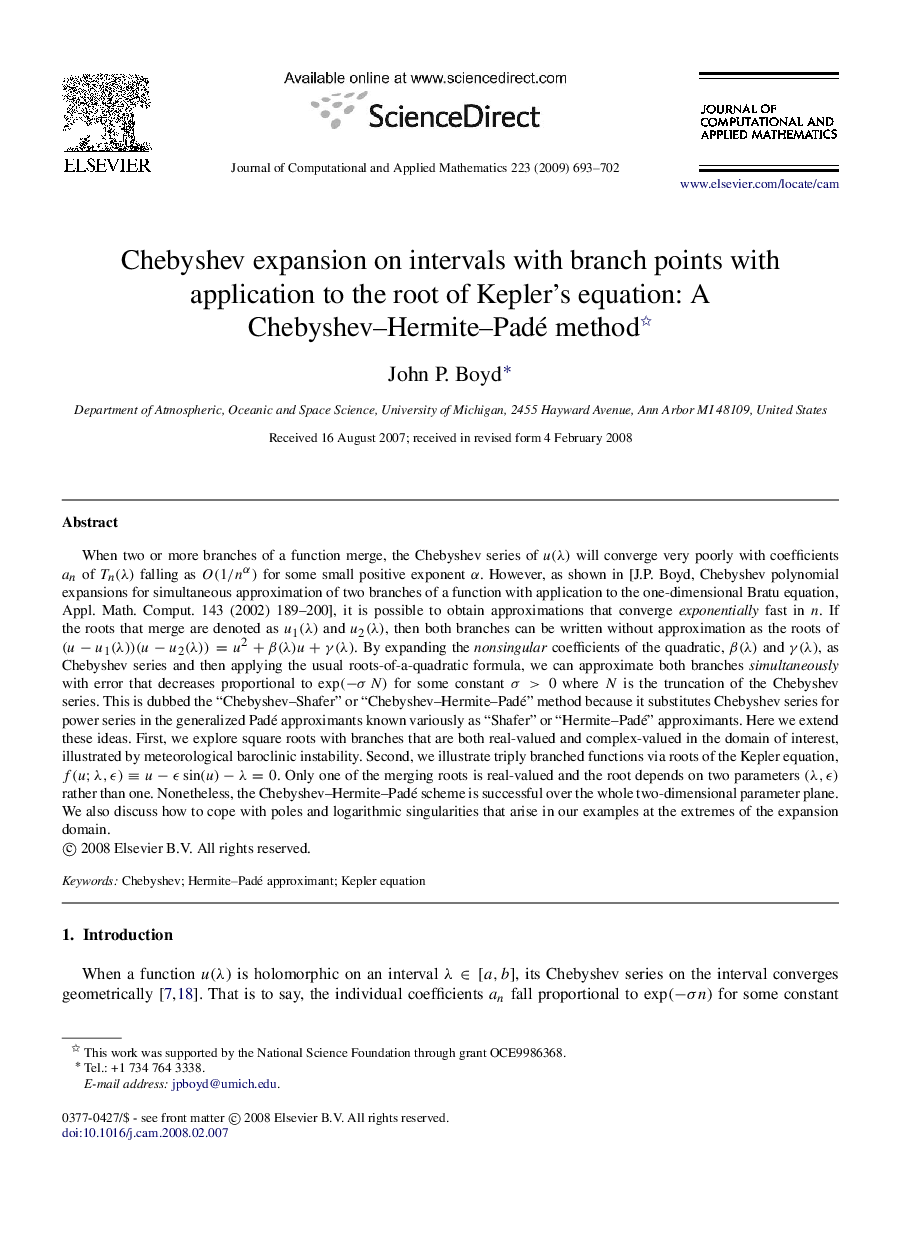| کد مقاله | کد نشریه | سال انتشار | مقاله انگلیسی | نسخه تمام متن |
|---|---|---|---|---|
| 4642225 | 1341336 | 2009 | 10 صفحه PDF | دانلود رایگان |

When two or more branches of a function merge, the Chebyshev series of u(λ)u(λ) will converge very poorly with coefficients anan of Tn(λ)Tn(λ) falling as O(1/nα)O(1/nα) for some small positive exponent αα. However, as shown in [J.P. Boyd, Chebyshev polynomial expansions for simultaneous approximation of two branches of a function with application to the one-dimensional Bratu equation, Appl. Math. Comput. 143 (2002) 189–200], it is possible to obtain approximations that converge exponentially fast in nn. If the roots that merge are denoted as u1(λ)u1(λ) and u2(λ)u2(λ), then both branches can be written without approximation as the roots of (u−u1(λ))(u−u2(λ))=u2+β(λ)u+γ(λ)(u−u1(λ))(u−u2(λ))=u2+β(λ)u+γ(λ). By expanding the nonsingular coefficients of the quadratic, β(λ)β(λ) and γ(λ)γ(λ), as Chebyshev series and then applying the usual roots-of-a-quadratic formula, we can approximate both branches simultaneously with error that decreases proportional to exp(−σN) for some constant σ>0σ>0 where NN is the truncation of the Chebyshev series. This is dubbed the “Chebyshev–Shafer” or “Chebyshev–Hermite–Padé” method because it substitutes Chebyshev series for power series in the generalized Padé approximants known variously as “Shafer” or “Hermite–Padé” approximants. Here we extend these ideas. First, we explore square roots with branches that are both real-valued and complex-valued in the domain of interest, illustrated by meteorological baroclinic instability. Second, we illustrate triply branched functions via roots of the Kepler equation, f(u;λ,ϵ)≡u−ϵsin(u)−λ=0f(u;λ,ϵ)≡u−ϵsin(u)−λ=0. Only one of the merging roots is real-valued and the root depends on two parameters (λ,ϵ)(λ,ϵ) rather than one. Nonetheless, the Chebyshev–Hermite–Padé scheme is successful over the whole two-dimensional parameter plane. We also discuss how to cope with poles and logarithmic singularities that arise in our examples at the extremes of the expansion domain.
Journal: Journal of Computational and Applied Mathematics - Volume 223, Issue 2, 15 January 2009, Pages 693–702